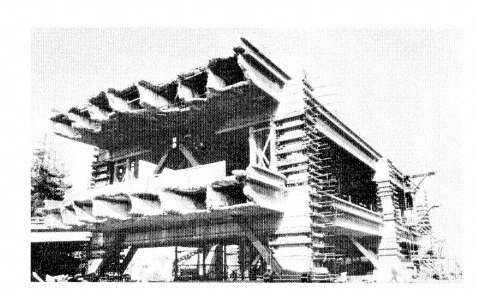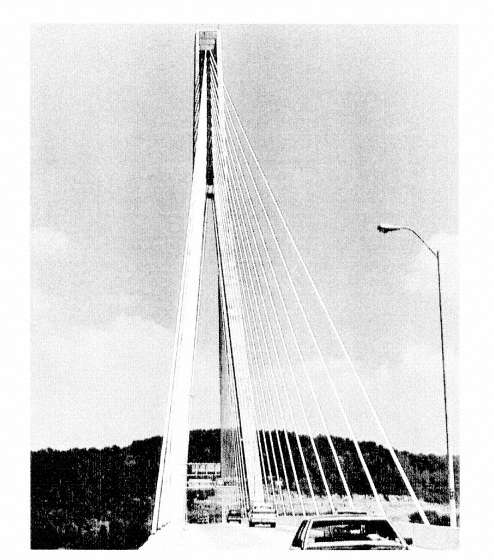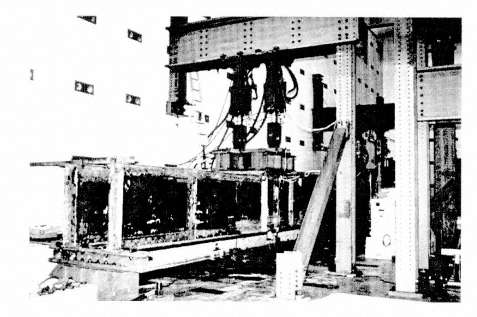9
TECHNOLOGY MANAGEMENT
Technology management links engineering, basic sciences, and management practices to enhance the likelihood that new technology will be developed and successfully incorporated into practice. The field includes technological change, R&D management, technology transfer, and the institutional environments that encourage productivity-enhancing new technology. For infrastructure, which operates within the context of a city or region, this means studies of such matters as inducements and barriers to innovation, public perceptions of technology, government policies that influence private R&D, and distributions of responsibility among public agencies and private enterprise. Research payoffs in this area could include improved productivity of the investment made by the NSF and others who fund research, reduced barriers to infrastructure innovation, and ultimately more rapid improvement in infrastructure performance.
These payoffs will be realized primarily over the longer term, but the current deterioration of many elements of the national infrastructure system and the increasing public attention given to this deterioration make such research more urgent. Hence, the committee recommends that this research should be given a prominent place in the NSF's infrastructure programs. Four major research areas that offer high payoff potential are discussed in this chapter:
-
development of improved analysis methods and management tools for characterizing and achieving high system performance;
-
exploration of technologies in other fields for adaptation to infrastructure applications;
-
development of better understanding of the institutional barriers to infrastructure innovation and how those barriers may be reduced; and
-
development of better understanding of the process by which research leads to infrastructure innovation.
ACHIEVING HIGH PERFORMANCE
Infrastructure is expected to provide a range of services to a diverse mix of users, efficiently, safely, and reliably, for long periods and under varied conditions. The nature of these services has changed in recent years, as new issues have occupied the public's attention, such as the processing and disposal of medical wastes, the retroactive disposal of toxic chemical and nuclear wastes, the reclamation of industrial disposal sites, and the emergency response necessitated by natural disasters or large-scale infrastructure failures. Such new needs are generally not well defined and are seemingly not being effectively met. Research is needed to develop more comprehensive statements of performance needs that are presented to stimulate new ways of providing these services.
Potential payoffs for this research are substantial: reduced damage and loss of life from natural and man-made disasters such as hurricanes, earthquakes, floods, and terrorist attacks; improved flexibility in dealing with environmental impacts of human activities, especially under emergency or other unusual conditions such as drought or industrial mishap; and improved allocation of public investment in infrastructure, reflecting the tradeoffs to be made among diverse design and management objectives.
Defining and Measuring Performance
Research is needed to develop criteria and measures of infrastructure performance that can be used for direct comparison of diverse technological alternatives. For example, it is very difficult to compare directly the long-term merits of investments in transport versus those in water supply, or use of wood versus steel for bridge structures, because of the wide range of factors to be considered. These criteria and measures will necessarily reflect the concerns of several government agencies and private interests, and must be accepted at all levels of the decision-making process to have an impact.1
Typical questions for research might include the following examples:
-
How can local and national interests and priorities be measured, presented, and balanced in setting infrastructure performance criteria?
-
What is the most effective use of system-operations data for performance benchmarking,2 and what role might public-access performance databases play in infrastructure system management?
Incorporating Externalities
Design and management of infrastructure involves dealing with many externalities3 such as air and water pollution emissions, neighborhood disruption, obstruction of views, and historic value of structures and neighborhoods. Current practices often neglect externalities or defer their consideration to later stages of decision making. For example, the preparation of environmental impact statements (EIS), mandated by law for many infrastructure construction projects, is generally performed independently of the conceptual and detailed facility design. Research is needed to provide better methods for measuring externalities and internalizing these factors (i.e., incorporating them thoroughly into design and management decision making).
Typical questions for research might include the following examples:
-
How should air pollution and leachates be valued in making location and design decisions about hazardous and municipal solid-waste treatment systems?
-
What role can public education play in shifting demand or willingness to pay for infrastructure services (e.g., through influence on lifestyles or acceptance of technological risk)?
-
How can the full cost of product packaging be most effectively measured and reflected in pricing policy?
-
How should historic values of infrastructure facilities and the surrounding areas be measured in undertaking infrastructure repair and replacement in historic urban precincts?
-
What are the bases for judging infrastructure facility capacity (e.g., with respect to crowding and congestion, time delay, and availability of service)?
Emergency Procedures
Urban emergencies have opened questions regarding how well prepared current infrastructure systems may be to respond to disruptions or other sudden changes in service demands. For example, during the evacuation of New York's World Trade Center following the 1993 bombing incident, internal communications systems were disabled, and local cable television connections provided the only link to people stranded in the buildings. Burst water mains in the early 1990s have disrupted transit and street traffic, power supplies, and communications in several East Coast cities. Storms in the nation's mid-section and earthquakes in the West have been similarly or even more disruptive. Research is needed to develop better algorithms and operating procedures for detecting, assessing, and responding to infrastructure emergencies, particularly with regard to modal interdependencies. Typical questions for research might
include the exploration of opportunities for continuous multimodal monitoring and control systems for urban infrastructure, for example with imbedded sensors, cellular or wired communications, and high-speed data processing.
TECHNOLOGY ADAPTATION TO INFRASTRUCTURE
New technologies are emerging in many fields (e.g., medicine, computing, and consumer electronics) that could be adapted to infrastructure. While some large corporations undertake reconnaissance of emerging technologies to identify product development opportunities, relatively little such work is done for public works. The evaluation of new technologies for infrastructure applications must encompass a broad range of concerns for complementary changes that may be needed for successful adaptation.

TESTING OF FAILURE
Sometimes disasters yield research opportunities. This length of the Cypress Street viaduct, in Oakland, California, remained apparently undamaged following the 1989 Loma Prieta earthquake. To learn more about the causes of structural failures during the earthquake and methods that might be used to retrofit other structures to better withstand future earthquakes, researchers conducted low-amplitude forced-vibration test and high-amplitude static tests on the structure. A final series of tests was carried to levels causing structural deformations and severe damage. (Photo courtesy of Bechtel Corporation, Karl Wiedner, photographer)
For example, development of successful electric-powered highway vehicles will require not only new battery technology, but also systems for routine and emergency recharging of vehicles away from their normal home locations. Such complementary needs could discourage development of a promising new technology.
Research is needed to support development of analytical methods for screening emerging technologies for infrastructure applications, estimating the broad costs and benefits of their adaptation, and developing feasible public policy and strategies for encouraging beneficial adaptations. The payoffs of such research would be realized in longer-term improvement of public health and safety and infrastructure effectiveness.
Technology Compatibility Assessment
Research is needed to provide better understanding of the ways in which new infrastructure technology can be introduced compatibly with existing systems, so that transitions to higher performance may be made without substantial disruptions of existing service areas. While some modes evolve more easily through the rapid spread of small component changes (e.g., materials science leading to change in semiconductors, leading in turn to improved communications), for others the process is more difficult and disruptive (e.g., construction of a new transit system). Research in this area could identify opportunities for significant evolutionary improvement in economic efficiency and functional effectiveness of the system overall, and develop principles for optimal introductions of new infrastructure technology.
Analysis of Technology Markets
Better models and methods to assess the market potential of new infrastructure technologies would be useful in assessing the merits of proposed public investment programs. Infrastructure's high public accountability and dependence on a political budget-making process shape both the way criteria for investment are defined and applied and the scope of the market for new products and services. Market potential studies typically developed by private-sector firms, based on future profit potential, cannot be easily adapted to the public decision process. Research in this area could develop the bases for alternative procedures for assessing market potential and presenting that assessment effectively within the public decision-making context, for example by seeking to define protocols and database systems for public-sector infrastructure technology assessments. Transfers of industrial hydraulic systems for water-resources applications, new fuel
cycles for municipal energy supplies, and genetic engineering for hazardous- and municipal-waste cleanup applications are among the topics the committee discussed. New systems for district utility management (e.g., heating and cooling, water recycling, or on-site waste processing for high-density urban areas), leading perhaps to development of "intelligent" districts,4 is another area of opportunity.
INSTITUTIONAL OBSTACLES TO INNOVATION
Relationships among the various parties involved in infrastructure development and management are often important to how technology is used. For example, the traditional design-bid-build process for infrastructure, with construction bid on a unit-price or fixed-cost basis, can deter technological innovation by removing incentives to innovate. Some observers propose that other procurement methods and contractual arrangements (e.g., design-build, build-own-transfer, and cost-plus-fee construction) are more conducive to infrastructure innovation. Similar claims are made regarding the distribution of ownership and management control between private and public sectors. Research could identify the relative costs, risks, and benefits of nontraditional procurement arrangements.
Such research might explore how environmental quality standards and the enforcement agencies influence infrastructure decision making. Other studies could assess the influence of government and private procurement processes on incentives and obstacles to developers of new technology, and what role ownership structures (e.g., public utility or toll authority versus government department) play in determining willingness to adopt promising new infrastructure technology.
The primary payoffs of research in this area would be improved cost-effectiveness and speed in application of new infrastructure technologies. For example, significantly more-stringent water quality requirements may make current water purification technologies obsolete by raising operating costs to levels that would justify new investment if alternative technology were available. Understanding the scale of these higher costs, when and how they must be paid, and by whom, could provide insight into how research investment, risk-management methods, and system procurements could foster more efficient treatment technologies.
Criteria and Standards
Better understanding of the impacts of government-imposed criteria and standards on infrastructure design and operations is needed. New standards meant to modify narrowly defined infrastructure performance requirements can have much broader effects on related processes and

NEW MATERIALS, NEW FORMS
Higher strength materials and computer-based analysis methods have spurred wider use of cable-staied bridge designs. Elegant structures such as this highway bridge between Huntington, West Virginia and Proctorville, Ohio, are gaining public attention for their aesthetic beauty as well as their structural efficiency. (Photo courtesy of the National Endowment for the Arts, Presidential Design Awards program)
institutions. For example, air-quality regulations currently have decisive influence on transportation operations in many regions. Research could support development of new standards designed to encourage long-term innovation as well as immediate improvements in infrastructure performance. Such research is needed particularly in the management of drinking-water and waste-water quality, air-pollution emissions, and public health effects of infrastructure operations (e.g., electromagnetic radiation from electric-power transmission and telecommunications).
Impact of Procurement Methods
The infrastructure procurement process often is unnecessarily restrictive, effectively excluding new technologies from consideration. Overly detailed and specific lists of requirements, functions, characteristics, or attributes obscure key underlying functions or performance desired. Such restrictiveness arises in trying to reduce uncertainty by controlling process, when methods for measuring performance of the product are lacking. Research in this area could enhance ways that technological risk is measured and managed, as well as the allocation of financial risks of introducing new technologies. Such research could draw on results of research into methods for condition assessment and monitoring (Chapter 6) and education of infrastructure professionals and the public (Chapter 5).
Performance/Cost Trade-Offs Under Uncertainty
More effective analytical models are needed to support evaluation of the trade-offs between performance obtained and likely lifetime costs of infrastructure. The traditional dependence on discounted cash-flow analysis can limit decision makers' abilities to deal with intergroup and intergenerational trade-offs. Information on the relationships between prices and demand for infrastructure services are lacking as well, limiting decision makers' abilities to assess, for example, how increased water rates may suppress consumption, leading in turn to revenue deficits that curtail long-term performance improvement programs. Research could explore hedonic pricing,5 benefit-cost assessment models for infrastructure-operations scenario analysis, and more effective ways to present benefit and cost information for public decision making.
RESEARCH-TO-INNOVATION PROCESS
The process by which research produces new technology that is subsequently transferred into practice determines how effective R&D spending
can be in yielding infrastructure improvement. Research is needed to make this process more effective.
Typical questions for research might include:
-
What is the impact on productivity of distributed government support of infrastructure research (e.g., distinct local, regional, state, and federal responsibilities, distributed among separate energy, transportation, or water resources agencies) versus more concentrated management typical of many European countries (e.g., a single national ministry of construction and local authorities)?
-
What organizational models for collaboration between educational institutions and local governments are most effective in encouraging research spending that leads to effective innovation?
-
Do management programs that focus on organizational performance (e.g., Total Quality Management, management by objectives) have significant impact on rates of infrastructure technological innovation?
-
How can an assessment be made of the likelihood that a particular infrastructure management organization will be successful in adapting and applying new technology to achieve improved system performance?
NOTES
|
1 |
The Building Research Board is conducting a study sponsored by the U.S. Army Corps of Engineers on measuring and enhancing infrastructure performance. The report of this study is planned to be published in early 1995. |
|
2 |
Benchmarking, the measurement of current system performance in terms that provide standards against which future performance may be judged, is also discussed in the context of system life-cycle management (Chapter 3). |
|
3 |
The term is used by economists to refer to product characteristics not incorporated directly into the measures of price and quantity that describe the balance between demand and supply. |
|
4 |
Architects and engineers have adopted the term ''intelligent'' to refer to buildings that incorporate advanced communication and controls for management of their electric and heating and ventilation systems. |
|
5 |
Hedonic pricing is a statistical technique used to infer market values people might be willing to pay for goods and services not easily traded on an open market. |

INFRASTRUCTURE IN THE LAB
Research on old infrastructure can provide new design information. Here, riveted railway bridge girders that have seen 50 years of service are tested in the laboratory to determine accumulated damage and help researchers develop tests and mathematical models for predicting the remaining service life of old structures. (Photo courtesy of ATLSS, Lehigh University)










